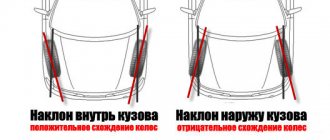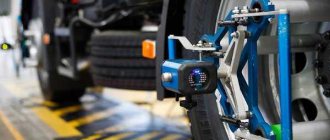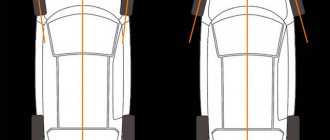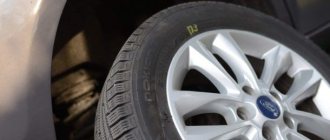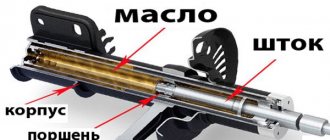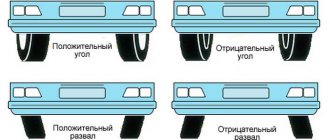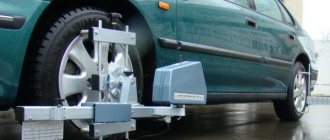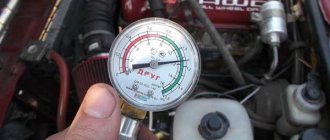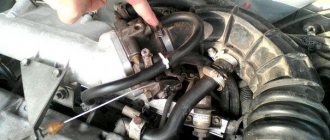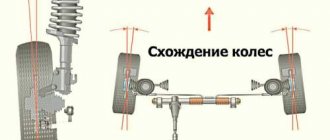You can adjust the wheel alignment yourself using simple improvised means. This article is devoted to how to make a wheel alignment with your own hands, what difficulties are most often encountered during adjustment.
Incorrect adjustment of the wheel alignment yourself can lead, for example, to accelerated tire wear or to a deviation to the right or left side of the car while driving in a straight line. But it is quite possible to do wheel alignment correctly at home.
How to make a wheel alignment
You can adjust the wheel alignment angles of your car with your own hands using available tools and simple devices.
In this material we will talk about how to do wheel alignment yourself at home, and what difficulties are most often encountered when adjusting wheel alignment angles. Incorrect alignment adjustment can cause, for example, rapid wear of tires, or the fact that when driving in a straight line, the car will pull to the left or to the right.
At the end of this article you will find a video that explains and shows in detail everything you need to know about wheel alignment.
Useful tips
As practice shows, wheel alignment angles are an important parameter and require constant monitoring and adjustment. In fact, repairs to the suspension and steering (for example, replacing shock absorbers, etc.) will result in the wheel alignment angles changing. Also, during the operation of the car, these parameters gradually change (suspension wear, driving over uneven surfaces, etc.)
To simplify and speed up the adjustment of camber and toe after repairing the chassis, before removing suspension parts, it is recommended to mark all connections in order to then accurately align their location relative to each other during reassembly.
To do this, you can use paint or make marks with a chisel. By the way, if the work involves tie rods, you need to count the number of revolutions while unscrewing the ends from the tie rods.
As for the camber - even if everything is in order with the suspension, it is optimal to check and adjust the angles of the wheels every time after changing winter and summer tires for the season.
In turn, a deviation of some parameters by just minutes (not even degrees) from the norm can cause the car’s handling to noticeably change for the worse. For this reason, wheel alignment should only be done by trusted specialists.
At the same time, the presence of modern equipment does not mean that all adjustments will be made correctly and as accurately as possible. The result depends, first of all, on the experience and qualifications of the specialist himself.
As a result, even after adjustment on a modern stand, you need to drive the car. If the behavior of the car on the road causes complaints, then you need to look for the reason or make adjustments again.
Strut support: what is a shock absorber support bearing. Why are support bearings of struts needed, signs of their malfunctions, replacement of support bearings.
Wheel alignment - what is it?
First, let's look at the theory: wheel alignment - what is it? What are the wheel alignment angles, and how does the car’s behavior on the road depend on them?
Camber is the angle between the vertical and the plane of the wheel. It ensures reliable contact of the tire with the road (see picture above).
Toe is the angle between the direction of travel and the plane of rotation of the wheel. The stability of the car in corners and tire wear depend on it.
- On rear-wheel drive cars, the wheels should be slightly turned towards each other - this is called positive toe. When moving, they move apart and become parallel.
- For front-wheel drive vehicles, on the contrary, the toe-in should be negative (see the diagram below).
Caster is the longitudinal inclination angle of the king pin. This parameter very rarely needs adjustment, only on a newly assembled front suspension from new parts, so we will not consider its adjustment.
Repairing the suspension or steering (replacing the same shock absorbers or steering joint) leads to a significant change in the wheel alignment angles. Daily use of the car also makes adjustments to these parameters over time, so the need to adjust the wheel alignment periodically arises.
It is best to adjust wheel alignment twice a year, during seasonal tire changes. During this time, you will fall into a hole more than once or run over a curb, causing the chassis to become loose and the angles to change. Timely alignment adjustment will cost much less than a set of new tires.
In 1955, American engineer Lee Hunter developed the first wheel alignment stand. Sensors mounted on the wheels sent focused beams of light and accurately measured angles. That's why the stand was called optical. But already in 1969 it was connected to a computer, and in 1995, 3D technology was first used to measure and adjust angles.
True, Soviet car enthusiasts managed without any stands or computers - using wrenches, calipers, thread and a plumb line, they adjusted the camber and toe angles with their own hands.
Other wheel parameters
In addition to toe-in, there are two more important parameters - caster and camber, all together they position the wheel in three mutually perpendicular planes.
What is camber
Camber characterizes the degree of deviation of the wheel from the vertical in a straight-line driving position and can be positive (the tops of the wheels outward of the body) or negative (the tops of the wheels inward).
What is caster
The wheels turn right and left around an imaginary line passing through the shock absorber axis and the center of the steering knuckle ball joint. Which can be set vertically or offset, forming an angle to the surface of the road surface. The conventional point on the bottom of the tread around which the rotation is made can:
- coincide with the fulcrum of the wheel;
- to be ahead of her;
- be behind.
Caster when adjusting wheels
The angle formed by the conventional axis of rotation of the wheel and the normal to the road surface is called caster. This adjustment is used to maintain a given direction of travel. The change in camber angle when turning is also the merit of the caster.
Instructions for adjusting wheel alignment yourself
Before you begin adjusting the camber and toe angles, it is imperative to check the vehicle's chassis. If repairs are needed, then doing a wheel alignment is pointless. The steering and suspension must be in perfect order.
Pay attention to three points on which the wheel alignment angles on a car greatly depend:
Be sure to check the tire pressure before adjusting the wheel alignment and make sure that you haven’t accidentally forgotten a couple of bags of potatoes or cement in the trunk
